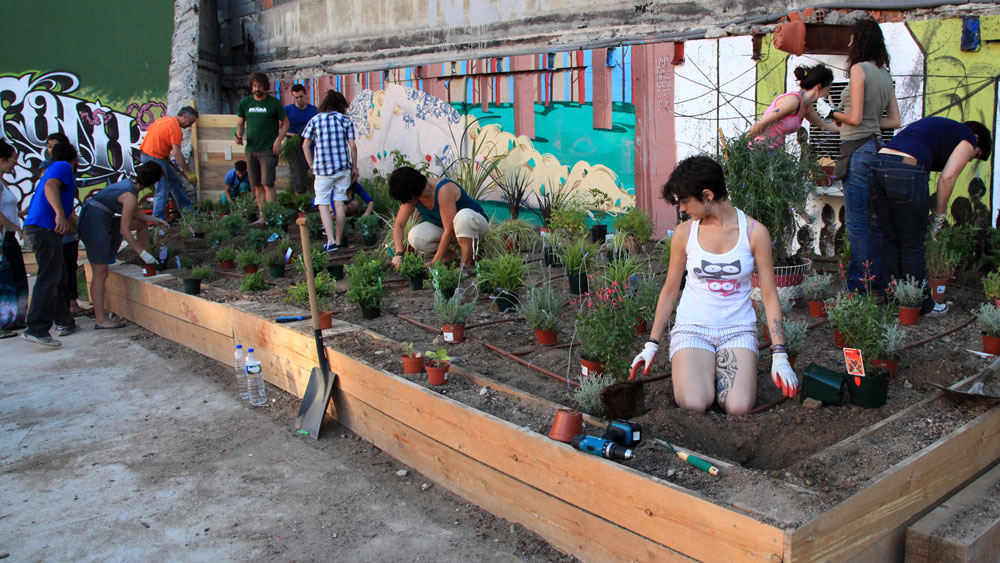When the CyberArts 2013 opens it’s doors on September 5th, El Campo de Cebada, winners of the Golden Nica in Digital Communities, will be part of it. It’s a self-managed camp in Madrid/Spain, cleverly showing what the urban space of the 21st century might look like. We have talked with Zuloark, the architects behind this projects, finding out what you should know about the camp and what you could learn from it.

How did you come up with the idea for the camp, how did it start?
Campo de Cebada is being developed in a site formerly occupied by a public swimming pool. The city government tore down that building to construct a more modern and fancy one, but then the crisis arrived and this void was the left over in the middle of La Latina quarter. During Madrid’s 2010 White Night the architects Exyzt constructed a temporary installation, including a little swimming pool, a bar and a concert place, because of this neighbours were both happily intrigued and also angry about the noise and the people going on for two weeks. But this gave the neighbors the idea that maybe they could do the same in this place, managing it while its a useless void in the city to turn it into a place that could be useful again in the urban context. So we configured a group of individuals and associations interested in open it and we, as architects, began to represent the role of intermediaries between this two figures, citizen and administration. We had a meeting with the city government and finally we arrived to some agreements in which they gave away the space to the neighbors self-management with the promise to leave if some investor arrive to finish the original project That’s why we say that Campo de Cebada started off as a controversy.
In general, what is the current situation like in Madrid or Spain, what is it like to live as an artist?
Its a great moment thanks to the recession. Because the regular economic growth has stopped and even though is a very dramatic situation for a lot of families, now the citizen is finding out new possibilities of deciding how they want to build there own urban space. Regular urban planning its design in a way that controversies are eliminated but also the possibilities and the natural urban life, Campo de Cebada instead works as a test tube of 21st century urbanism, setting a game field, sometimes right, sometimes wrong but always changing because it’s design is learning in a way. Its a possibilitator.

How important is the aspect of community, do you think that it will play a bigger part in the future?
Community and the concept of non authorship behind it, is very important. You work as a citizen, in a co-responsibility space, you apply your knowledge and you learn from others. And there are so many people working there that you can only say that the only author of Campo de Cebada is Campo de Cebada itself. Thats how you construct community by constructing the ‘commons’ responsibility in the neighbour, so that its not a place thats its given to you by authorities, its a place built with the common decisions that make you feel a part of it and this is provokes a natural “taking care” of your urban space.
What are the plans for the future of your camp, do you plan to expand it, build more camps?
The aim is to learn how to come to agreements and cope with the administration. Building a common space with “instructions” that can be copied elsewhere.

What kind of people stay at your camp, what is the atmosphere like?
One of the most important things about Campo de Cebada is that it’s built with the aim of being an inclusive space. Where anyone can feel represented. This is because we have been making a lot of effort in including the maximum number of “actors” possible. Its not dependant on ideologies, its not run by any political or countercultural association but by the decisions of everyday neighbors in weekly popular assemblies. We’ve been insistent in working together with politics, making them also responsible, because we feel they are another necessary “actor” in urban space.
The result is that the atmosphere in Campo de Cebada is incredibly heterogeneous, lots of thing going on at the same time, with lots of degrees of activities and a big range of ages in the people you find inside.